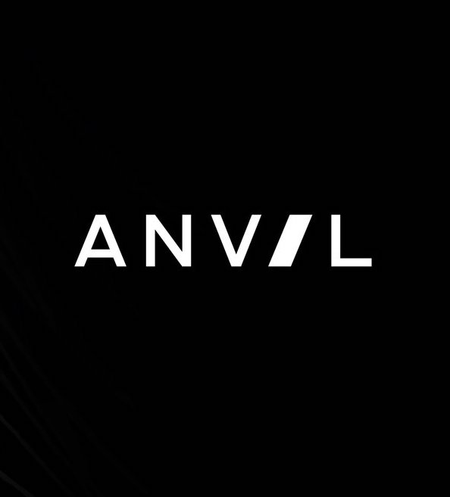
Anvil
Anvil is a decentralized finance (DeFi) protocol for the issuance of fully secured credit. The protocol's Ethereum-based smart contracts allow users to deposit collateral in a vault, issue letters of credit, and supply assets to staking pools.
Triaged by Immunefi
PoC Required
KYC required
Rewards
Rewards by Threat Level
Mainnet assets:
Reward amount is 10% of the funds directly affected up to a maximum of:
$100,000Minimum reward to discourage security researchers from withholding a bug report:
$25,000Rewards are distributed according to the impact of the vulnerability based on the Immunefi Vulnerability Severity Classification System V2.3.
Reward Calculation for Critical Level Reports
For critical smart contract bugs, the reward amount is 10% of the funds directly affected up to a maximum of USD 100,000. The calculation of the amount of funds at risk is based on the time and date the bug report is submitted. However, a minimum reward of USD 25,000 is to be rewarded in order to incentivize security researchers against withholding a critical bug report.
Repeatable Attack Limitations
-
If the smart contract where the vulnerability exists can be upgraded or paused, only the initial attack will be considered for a reward. This is because the project can mitigate the risk of further exploitation by upgrading or pausing the component where the vulnerability exists. The reward amount will depend on the severity of the impact and the funds at risk.
-
For critical repeatable attacks on smart contracts that cannot be upgraded or paused, the project will consider the cumulative impact of the repeatable attacks for a reward. This is because the project cannot prevent the attacker from repeatedly exploiting the vulnerability until all funds are drained and/or other irreversible damage is done. Therefore, this warrants a reward equivalent to 10% of funds at risk, capped at the maximum critical reward.
Reward Calculation for High Level Reports
-
High vulnerabilities concerning theft are rewarded within a range of $10,000 to $25,000 depending on the funds at risk, capped at the maximum high reward.
-
In the event of temporary freezing, the reward doubles from the full frozen value for every additional calendar month that the funds are temporarily frozen, up until a max cap of the high reward. This is because as the duration of the freezing lengthens, the potential for greater damage and subsequent reputational harm intensifies. Thus, by increasing the reward proportionally with the frozen duration, the project ensures stronger incentives for bug disclosure of this nature.
Reward Payment Terms
Payouts are handled by the Anvil team directly and are denominated in USD. However, payments are done in USDT on Ethereum.
Program Overview
Anvil is a decentralized finance (DeFi) protocol for the issuance of fully secured credit. The protocol's Ethereum-based smart contracts allow users to deposit collateral in a vault, issue letters of credit, and supply assets to staking pools. Anvil's mission is to provide flexible building blocks to bring efficient and transparent collateralized finance into an increasingly decentralized world.
For more information about Anvil, please visit https://anvil.xyz/
Anvil provides rewards in USDT on Ethereum, denominated in USD. For more details about the payment process, please view the Rewards by Threat Level section.
KYC Requirement
Anvil will be requesting KYC information in order to pay for successful bug submissions. The following information will be required:
- Full name
- Date of birth
- Proof of address (either a redacted bank statement with address or a recent utility bill)
- Copy of Passport or other Government issued ID
Eligibility Criteria
Security researchers who wish to participate must adhere to the rules of engagement set forth in this program and cannot be:
- On OFACs SDN list
- Official contributor, both past or present
- Employees and/or individuals closely associated with the project
- Security auditors that directly or indirectly participated in the audit review
Responsible Publication
Anvil adheres to category 3 - Approval Required. This Policy determines what information researchers are allowed to make public from their submitted bug reports. For more information about the category selected, please refer to our Responsible Publication page.
Primacy of Impact vs Primacy of Rules
Anvil adheres to the Primacy of Rules, which means that they are bound by the terms and conditions set within this program.
Please note that Anvil has already and will continue to use its discretion to reward insights and bugs that are technically out of scope according to the Rules but are very useful to the protocol nonetheless. The classification of Primacy of Rules rather than Primacy of Impact is simply to make it so Anvil may decide what is useful rather than being obligated to pay out a bounty that is not useful to Anvil but technically qualifies under PoI.
Proof of Concept (PoC) Requirements
A PoC, demonstrating the bug's impact, is required for this program and has to comply with the Immunefi PoC Guidelines and Rules.
Public Disclosure of Known Issues
Bug reports covering previously-discovered bugs (listed below) are not eligible for a reward within this program. This includes known issues that the project is aware of but has consciously decided not to “fix”, necessary code changes, or any implemented operational mitigating procedures that can lessen potential risk. No known issues that are in scope at the moment. Any known issues that result from the Boost to be done immediately before this will be added last-minute.
Previous Audits
Anvil’s completed audit reports can be found at https://docs.anvil.xyz/contracts/audits. In addition, there is a record on Immunefi’s site of completed bug bounties and audit competitions done through Immunefi. Any unfixed vulnerabilities mentioned in these reports are not eligible for a reward.
Feasibility Limitations
The project may be receiving reports that are valid (the bug and attack vector are real) and cite assets and impacts that are in scope, but there may be obstacles or barriers to executing the attack in the real world. In other words, there is a question about how feasible the attack really is. Conversely, there may also be mitigation measures that projects can take to prevent the impact of the bug, which are not feasible or would require unconventional action and hence, should not be used as reasons for downgrading a bug's severity.
Therefore, Immunefi has developed a set of feasibility limitation standards which by default states what security researchers, as well as projects, can or cannot cite when reviewing a bug report.
Immunefi Standard Badge
By adhering to Immunefi’s best practice recommendations, Anvilhas satisfied the requirements for the Immunefi Standard Badge.
KYC required
The submission of KYC information is a requirement for payout processing.
Proof of Concept
Proof of concept is always required for all severities.
Responsible Publication
Category 3: Approval Required
Prohibited Activities
- Any testing on mainnet or public testnet deployed code; all testing should be done on local-forks of either public testnet or mainnet
- Any testing with pricing oracles or third-party smart contracts
- Attempting phishing or other social engineering attacks against our employees and/or customers
- Any testing with third-party systems and applications (e.g. browser extensions) as well as websites (e.g. SSO providers, advertising networks)
- Any denial of service attacks that are executed against project assets
- Automated testing of services that generates significant amounts of traffic
- Public disclosure of an unpatched vulnerability in an embargoed bounty
- Any other actions prohibited by the Immunefi Rules
Feasibility Limitations
The project may be receiving reports that are valid (the bug and attack vector are real) and cite assets and impacts that are in scope, but there may be obstacles or barriers to executing the attack in the real world. In other words, there is a question about how feasible the attack really is. Conversely, there may also be mitigation measures that projects can take to prevent the impact of the bug, which are not feasible or would require unconventional action and hence, should not be used as reasons for downgrading a bug's severity. Therefore, Immunefi has developed a set of feasibility limitation standards which by default states what security researchers, as well as projects, can or cannot cite when reviewing a bug report.

